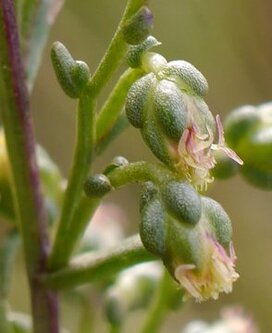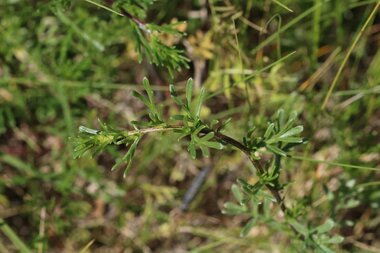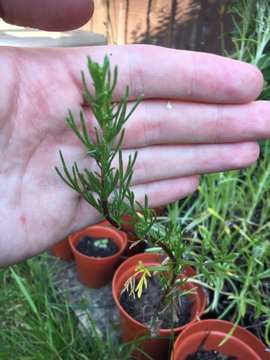Dune Wormwood - a plant in trouble!

Dune wormwood (Artemisia campestris subsp. maritima) is so rare in Britain that it is now confined to one site, the Crosby dune system on the Sefton Coast, and totals just four plants. In 2017, these plants were threatened by fires raging across the dunes, which missed them by no more than a metre. It was clear that the subspecies was in imminent danger of extinction, and so NWRPI applied to Natural England for a special licence to take a number of cuttings with a view to cultivating them off site.
Licence received and with consent from Sefton Council, on a hot and sunny day in July 2019, we ventured onto the dunes to take a small number of cuttings from these plants. Our aims were, in the short term, to bring the Sefton line into cultivation and provide backup stock for the four plants, and, in the longer term, to reinforce this tiny population. Sampling was conducted in line with the BSBI Code of Conduct, with a small number of twigs being cut from the base of each plant, each with some root attached. The 10 cuttings were very carefully transported to another location, where they were to be cultivated. This process was successful and all the cuttings survived and are currently thriving. It is expected that it will take 2-4 years before they are large enough to be planted out, at which time we will seek the appropriate consent to do so.
Licence received and with consent from Sefton Council, on a hot and sunny day in July 2019, we ventured onto the dunes to take a small number of cuttings from these plants. Our aims were, in the short term, to bring the Sefton line into cultivation and provide backup stock for the four plants, and, in the longer term, to reinforce this tiny population. Sampling was conducted in line with the BSBI Code of Conduct, with a small number of twigs being cut from the base of each plant, each with some root attached. The 10 cuttings were very carefully transported to another location, where they were to be cultivated. This process was successful and all the cuttings survived and are currently thriving. It is expected that it will take 2-4 years before they are large enough to be planted out, at which time we will seek the appropriate consent to do so.
As well as returning the plants to the Sefton Coast, there is also the possibility of translocation of future cuttings. In addition, other organisations may wish to cultivate material from this sampled stock – making it the key saviour of this species in Britain.
Written by Debra Williams, Words and Deeds
Written by Debra Williams, Words and Deeds



